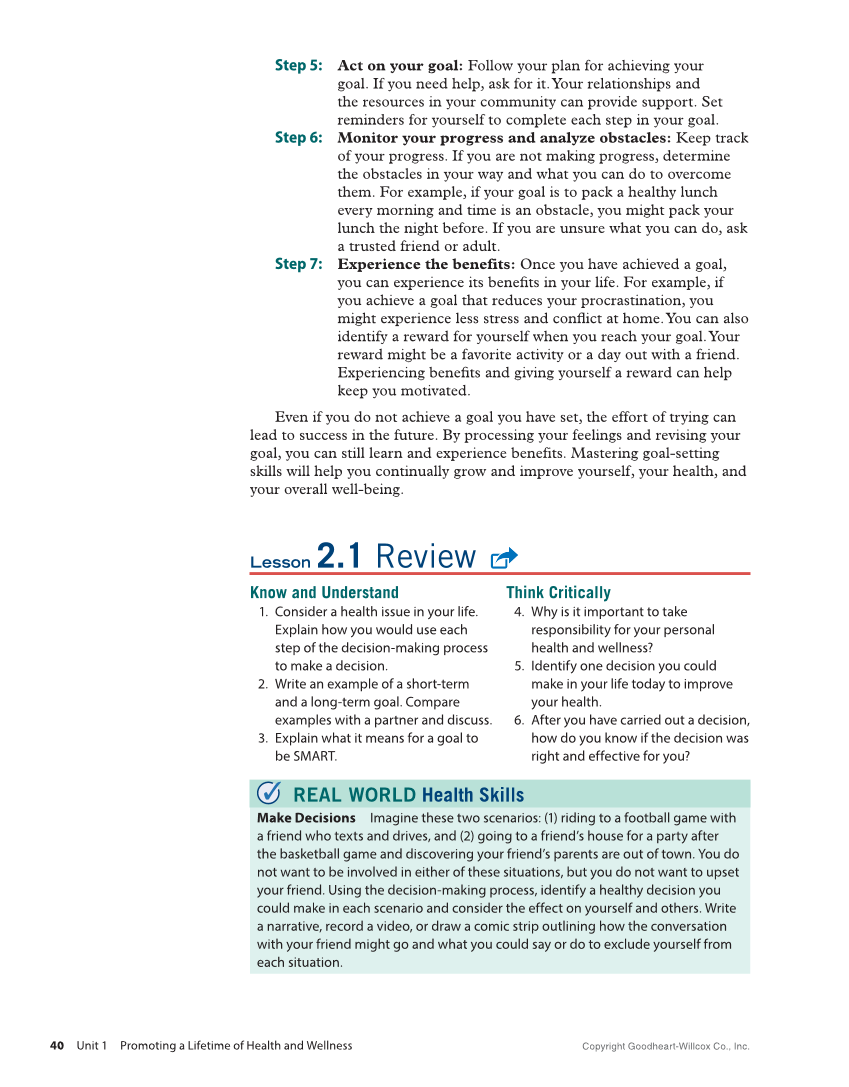Step 5: Act on your goal: Follow your plan for achieving your goal. If you need help, ask for it. Your relationships and the resources in your community can provide support. Set reminders for yourself to complete each step in your goal. Step 6: Monitor your progress and analyze obstacles: Keep track of your progress. If you are not making progress, determine the obstacles in your way and what you can do to overcome them. For example, if your goal is to pack a healthy lunch every morning and time is an obstacle, you might pack your lunch the night before. If you are unsure what you can do, ask a trusted friend or adult. Step 7: Experience the benefits: Once you have achieved a goal, you can experience its benefits in your life. For example, if you achieve a goal that reduces your procrastination, you might experience less stress and conflict at home. You can also identify a reward for yourself when you reach your goal. Your reward might be a favorite activity or a day out with a friend. Experiencing benefits and giving yourself a reward can help keep you motivated. Even if you do not achieve a goal you have set, the effort of trying can lead to success in the future. By processing your feelings and revising your goal, you can still learn and experience benefits. Mastering goal-setting skills will help you continually grow and improve yourself, your health, and your overall well-being. Lesson 2.1 Review Know and Understand 1. Consider a health issue in your life. Explain how you would use each step of the decision-making process to make a decision. 2. Write an example of a short-term and a long-term goal. Compare examples with a partner and discuss. 3. Explain what it means for a goal to be SMART. Think Critically 4. Why is it important to take responsibility for your personal health and wellness? 5. Identify one decision you could make in your life today to improve your health. 6. After you have carried out a decision, how do you know if the decision was right and effective for you? REAL WORLD Health Skills Make Decisions Imagine these two scenarios: (1) riding to a football game with a friend who texts and drives, and (2) going to a friend’s house for a party after the basketball game and discovering your friend’s parents are out of town. You do not want to be involved in either of these situations, but you do not want to upset your friend. Using the decision-making process, identify a healthy decision you could make in each scenario and consider the effect on yourself and others. Write a narrative, record a video, or draw a comic strip outlining how the conversation with your friend might go and what you could say or do to exclude yourself from each situation. Copyright Goodheart-Willcox Co., Inc. 40 Unit 1 Promoting a Lifetime of Health and Wellness
